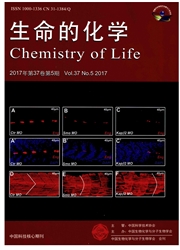

 中文摘要:
中文摘要:
我们评估了 calpain 的角色 integrin 的劈开相关的变化在 integrin IIb3 的 3 细胞质的尾巴用一个 trans 主导的抑制模型的双向发信号。妄想的 Tac-3 蛋白质(即, Tac-3 , Tac-3741 , Tac-3747 , Tac-3754 , Tac-3759 ,并且 Tac-3NITY )由组成细胞外并且人的 IL-2 受体( Tac )和人的 integrin 的 transmembrane 领域 3 细胞质的领域稳定地在怀有人的 glycoprotein Ib-IX 和野类型的 integrin IIb3 的 123 个 CHO 房间被表示。不同房间是为稳定的粘附,并且为在外面在里面代表并且在内外面分别地表明事件的有约束力的可溶的纤维蛋白原的 assayed 并且在使不能调动的纤维蛋白原上传播。禁止的妄想的蛋白质 Tac-3,和 Tac-3NITY 部分稀释了稳定的粘附并且传播。Tac-3, Tac-3759, Tac-3NITY,和 Tac-3754,然而并非 Tac-3747 或 Tac-3741,损害了可溶的纤维蛋白原绑定。结果显示双向发信号被 Tac-3 和 Tac-3NITY 显著地禁止,虽然到更小的程度。而且,仅仅在内外面发信号在 123/Tac-3759 和 123/Tac-3754 房间被损害与相对照一在 123/Tac-3747 和 123/Tac-3741 房间的未经触动的双向发信号。在结论, integrin 的 calpain 劈开 3 在由与细胞质的蛋白质打断它的相互作用而非改变它的符合构造发信号上导致了规章的效果,并且可以因此调整血小板功能。
 英文摘要:
英文摘要:
We evaluated the roles of calpain cleavage-related mutations of the integrin β3 cytoplasmic tail in integrin αIIbβ3 bidirectional signaling using a trans-dominant inhibition model. Chimeric Tac-β3 proteins (i.e., Tac-β3, Tac-β3△741, Tac-β3△747, Tac-β3△754, Tac-β3△759, and Tac-β3ANITY) consisting of the extracellular and transmembrane domains of human IL-2 receptor (Tac) and the human integrin β3 cytoplasmic domain were stably expressed in the 123 CHO cells harboring human glycoprotein Ib-IX and wild-type integrin uIIbβ3. The different cells were assayed for stable adhesion and spreading on immobilized fibrinogen, and for binding soluble fibrinogen representing outside-in and inside-out signaling events, respectively. The chimeric protein Tac-β3 inhibited, and Tac-β3△NITY partially attenuated stable adhesion and spreading. Tac-β3, Tac-β3△759, Tac-β3ANITY, and Tac-β3△754, but not Tac-β3△747 or Tac-β3△741, impaired the soluble fibrinogen binding. Results indicated that the bidirectional signaling was significantly inhibited by Tac-β3△ and Tac-β3ANITY, albeit to a much lesser extent. Moreover, only inside-out signaling was impaired in the 123/Tac-β3△759 and 123/Tac-β3△754 cells in contrast to an intact bidirectional signaling in the 123/Tac-β3△747 and 123/Tac-β3△741 cells. In conclusion, the calpain cleavage of integrin β3 resulted in the regulatory effects on signaling by interrupting its interaction with cytoplasmic proteins rather than altering its conformation, and may thus regulate platelet function.
 同期刊论文项目
同期刊论文项目
 同项目期刊论文
同项目期刊论文
 期刊信息
期刊信息
